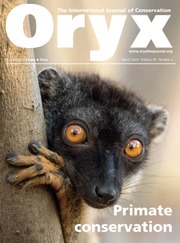Dulacia singularis Vell. (Olacaceae) is a tree endemic to the Brazilian Atlantic Forest, and its drupaceous fruits with fleshy pulp are an important food source for animals. The species is categorized as Endangered by the Brazilian National Centre for the Conservation of Flora because of its declining extent and area of occurrence and habitat quality, although it has not yet been assessed for the IUCN Red List.
Recently, a previously unknown population was found in unprotected Restinga areas (sandy coastal plains), at the mouth of the Rio Doce, within fragmented vegetation affected by the 2015 Rio Doce disaster. In this disaster the rupture of the Fundão dam in Minas Gerais state deposited mine tailings on the bed of the Rio Doce and at its mouth in Espírito Santo state. During intense storms and rough sea the sediment is resuspended, causing contaminants to reach the Restinga vegetation (Lana-Costa et al., 2023, Environmental and Experimental Botany, 105535).
In January 2025, we identified three adults and eight juveniles in this population of D. singularis. Adults were up to 7 m in height, with a maximum diameter of 9 cm, and juveniles were very close to the adults (< 1 m) and up to 6 m in height, with an average diameter of 1.6 cm. The species occurred below the average forest canopy (10 m), on sandy soil covered by a thick and continuous layer of leaf litter.
Hunting of small and medium-sized mammals such as the paca Cuniculus paca, red-rumped agouti Dasyprocta leporina and South American coati Nasua nasua in the region suggests that dispersal mechanisms for D. singularis could be vulnerable, inferred by the limited dispersal of seeds near the mother plant. Our findings indicate the need to explore new areas of occurrence of this and other threatened plant species, and underscore the need to establish protected areas in the vicinity of the mouth of the Rio Doce, a region adversely affected by one of the most significant environmental disasters ever to occur in Brazil.

A fruiting branch of Dulacia singularis in the wild. Photo: Rodrigo Valadares.

